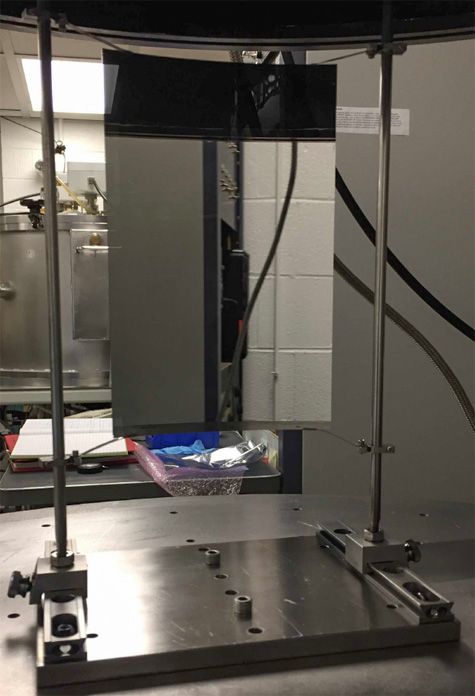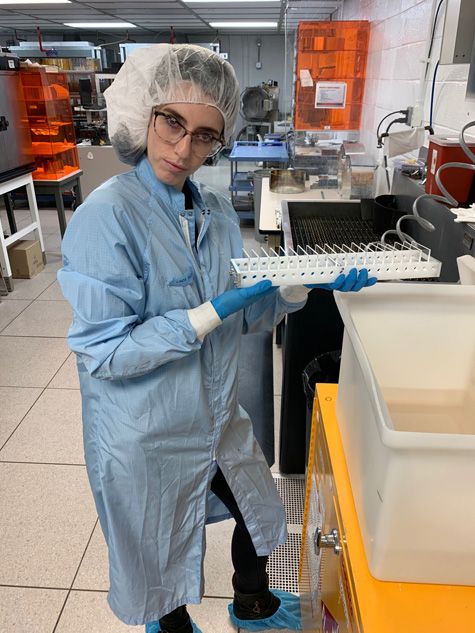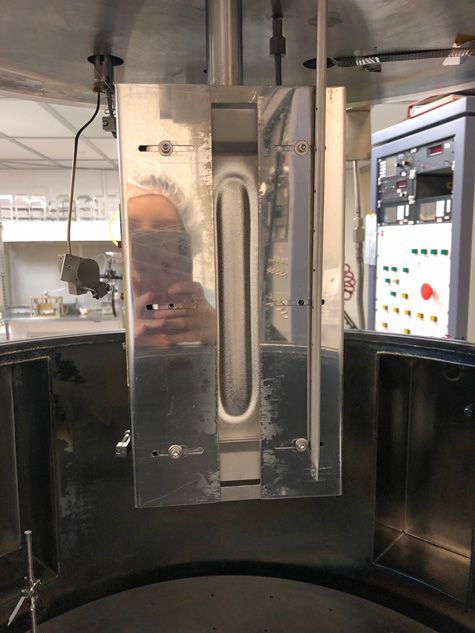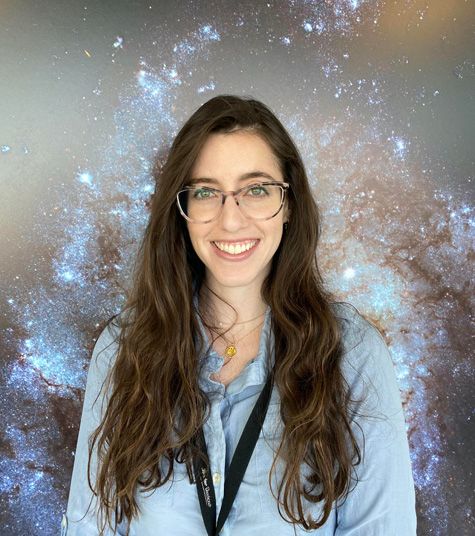Early Career Scientist Spotlight
Dr. Danielle Gurgew
X-ray Astrophysicist
X-ray Astrophysics Laboratory
What is your research focus?
My research in general is focused on the development of optics for astrophysical X-ray telescopes. Contrary to visible light telescopes which rely upon normal incidence reflection and refraction to focus sources, X-ray optics utilize a unique set of parameters to reflect incoming radiation at very shallow “grazing” angles, similar to how a stone is skipped on the surface of a pond. This shallow reflection geometry is required as X-rays would simply pass through the mirror material at normal incidence, unfocused, due to their high-energy nature. Utilizing this unique optical geometry and the high spatial resolution that it lends, enables the imaging of some of the most energetic and ancient objects in the universe. The X-ray sky has been extensively observed and imaged by astrophysical telescopes in the standard band of approximately 1 to 12 keV since 1970. The thermal processes of extremely energetic interactions and phenomena in stars, mergers of galaxies and active galactic nuclei, for example, are uncovered through these measurements.
However, the physics of the cosmos can be further investigated through the measurements of non-thermal processes occurring at hard X-ray energies beyond the 12 keV limit, extending up to several hundred keV. NuStar (the Nuclear Spectroscopic Telescope Array) was launched in 2012 to achieve this up to an 80 keV cutoff through the means of uniquely complex reflective optics. Specifically, the single layer gold and iridium coatings of the XMM-Newton and Chandra observatories respectively, are replaced by multilayer coatings of alternating high and low density materials. This unique combination of reflective surfaces deposited onto the mirror surface allows for constructive interference of hard X-rays, boosting the energy response of these optics.
My work focuses on the design and development of these complex optical structures for future X-ray telescopes with a large energy bandpass up to 200 keV, and possibly beyond. Enlarging the discovery space of the X-ray sky, this technology will help to uncover currently obscured knowledge ranging from unique questions about compact objects and active galactic nuclei to the X-ray background and star formation rates.

Credit: Hideyuki Mori
Did you always know that you wanted to be an X-ray astrophysicist?
Not at all! When I entered my undergraduate studies, I had the general notion that I’d become an architect. However, in the second semester of my first year, I took an intro to astronomy course and consequently shifted onto the physics and astronomy route! I changed all course work from there to physics and ended up pursuing undergraduate research in observational astronomy of exoplanets and X-ray binaries. During my last summer before graduate school, I worked as a NASA intern at Marshall Space Flight Center with the X-ray astronomy group and while there, found my passion for X-ray optic development and experimental physics. Since then, I have been doing most of my research in the lab, first at Marshall and now at Goddard.
What do you enjoy the most about your job?
I really enjoy the hands-on aspect of building and creating hardware that ultimately will be flown on earth-orbiting X-ray telescopes. Designing and theorizing how a specific technology could enable new science in our field is rewarding work in itself, but taking that one step further and using my experimental skills to develop and test these ideas in the lab such that a successful and novel optical system is created is exhilarating to me!

Credit: Daniel Dizon
What does a typical day at work look like for you?
A typical workday for me at Goddard usually begins with a quick review of the results from the previous day’s measurements and verification of the X-ray mirror design to be deposited that day. The mirror or test substrate is collected and transported to one of several labs used by the X-ray optics group.
The first stop is the X-ray coating lab where the deposition of the thin, reflective films of metals, ranging from platinum and nickel to chromium and iridium, are deposited onto either test substrates or X-ray mirrors in highly specialized vacuum chambers through the process of direct current (DC) magnetron sputtering. This process can take several minutes, up to many hours, depending on the complexity of the coating design, which is related to the scientific specifications of the mirrors.
The coated mirrors are then transported to the next laboratory where they are tested using an X-ray reflectometer system which utilizes X-rays of a specific energy to probe the coating and determine its physical properties such as thickness, density and roughness. The resulting measurements are then analyzed to determine if the physical coating deposited earlier in the day achieved the desired theoretical design calculated for a specific optical design. Usually, some adjustments need to be made to the deposition parameters used in the coating laboratory, especially during the early phases of coating design and development. These adjustments are calculated and recorded, to be used in the following day’s procedures, which look very similar to those I just described!
This day is typical when an X-ray coating design has already been calculated and chosen as the baseline for a test or mission. Previous to this, much time is spent behind a computer screen optimizing and re-optimizing for specific scientific requirements and telescope parameters. X-ray optic coating design and development is a highly iterative process, particularly when new designs are being tested, and require many iterations of coatings to achieve the desired result. Much patience and many X-rays are needed to keep this process flowing properly and ultimately to achieve an X-ray optic that will soon be flown onboard the next broadband X-ray telescope!

Credit: Danielle Gurgew
What early career advice do you have for those looking to do what you do?
First, I would suggest to always ask the question! Your peers and colleagues are generally more than happy to help out. Secondly, if you find that your interests lie within a specific field that you aren’t currently in, make contact with several experts whose work aligns with your own or peaks your interest. You may find that there are more opportunities for collaboration than you originally thought! I’ve done this, albeit very nervously, several times and have found that new collaborations and potential opportunities for my work were only one email or phone call away.
And finally, specific advice for experimental physicists: understand as many aspects about the system you are working with as possible, even if they are out of the scope of your expertise. If something goes wrong and you are the only person around in the lab, you’ll be much better equipped and more confident to find a solution than you would if some or many of the subsystems are unknown to you. I generally prefer to start with a system diagram and go from there! Oh, and ask lots of questions!
What do you like to do in your free time?
I really enjoy spending as much time outdoors as possible! Hiking, biking, kayaking and urban hikes are some of my favorite ways to achieve this when I’m not in the lab. Rock Creek Park is also a great spot to get some exposure to nature when I don’t have much time to devote to an excursion to Shenandoah. I am also a dancer (in a previous life) and recently got back into the studio for some ballet and modern dance classes, pre-covid of course. Otherwise, I very much enjoy getting lost in an epic novel.
What are your future research interests and goals?
Future research interests include working on designing optics and telescopes for the hard X-ray/soft gamma ray band, specifically with extremely long focal lengths. I’m also interested in expanding my capabilities to include hard X-ray detector technologies as well as analysis of active galactic nuclei as it pertains to the accretion history of the universe.
Biography
Home Town:
Huntsville, AL
Undergraduate Degree:
B.S. Physics, Emory University, Atlanta, GA
Post-graduate Degrees:
M.Sc & Ph.D, Physics, University of Alabama in Huntsville, Huntsville, AL

